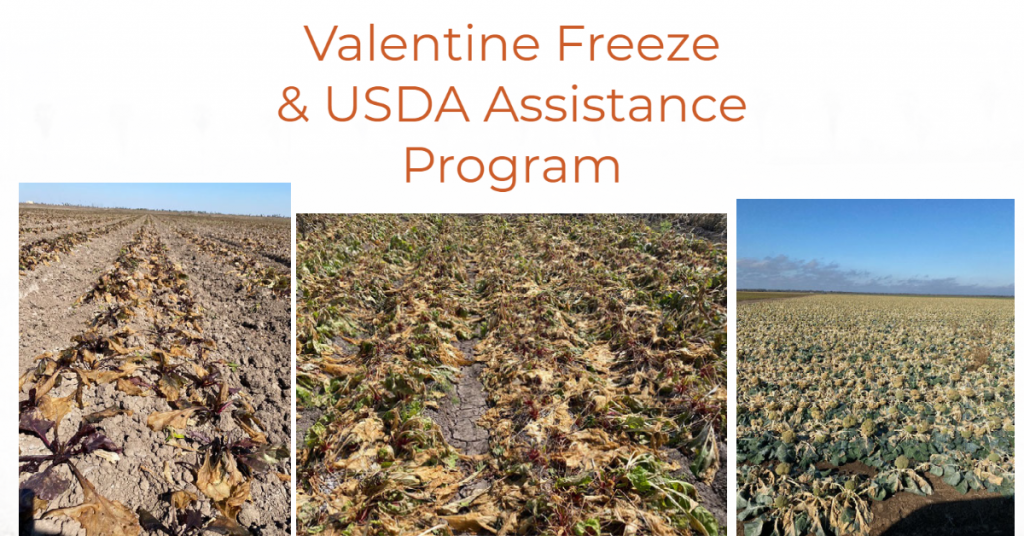For those growing operations that were impacted by the Valentine Freeze (aka Texas Winter Storm, aka Winter Storm Uri), we did want to make you aware of 2 existing USDA Disaster Relief programs. The best thing to do right now is CONTACT YOUR FSA OFFICE. Tell them what you lost in the freeze (commodity + acreage). You want to at least have the damages “on file” as quickly as possible.
TAP – Tree Assistance Program: provides cost share assistance to rehabilitate and replant tree, vines or shrubs loss experienced by orchards and nurseries. This complements NAP or crop insurance coverage, which covers the crop but not the plants or trees in all cases. This program can help pay for dead trees, tree removals AND for “rehabilitation” including staking and supporting trees, or trimming/pruning due to certain weather events (aka freeze/snowstorm). All trees, bushes and vines “from which an annual crop is produced for commercial purposes” are eligible.
*****
EQIP – Environmental Quality Incentives Program: provides financial resources for immediate and long-term need to help recover from natural disasters and conserve water resources. “EQIP provides financial and technical assistance to agricultural producers to address natural resource concerns and deliver environmental benefits such as improved water and air quality, conserved ground and surface water, increased soil health and reduced soil erosion and sedimentation, improved or created wildlife habitat, and mitigation against drought and increasing weather volatility.” Please check this long list of qualified conservation practices for which you might receive financial assistance. EQIP may even cover damages to certain parts of greenhouses, high-tunnels or other protected agricultural production units. USDA FSA can guide you through whether you experienced qualified damages or not.
*****
If you do apply for a USDA program, timing and documentation will be critical. Also, if you report losses now to the FSA office and a new program comes along later, already having your losses documented in the office expedites future submissions as well.
Timing: all USDA Disaster Relief programs have a time-limit by which producers must report their losses. The limit is different depending on the program. For example, TAP has a 90 day limit to report from the time of the event.
Documentation: It’s critical to keep accurate records to document all losses following this devastating cold weather event. Common documentation options include: Pictures, purchase records, Production records, B
